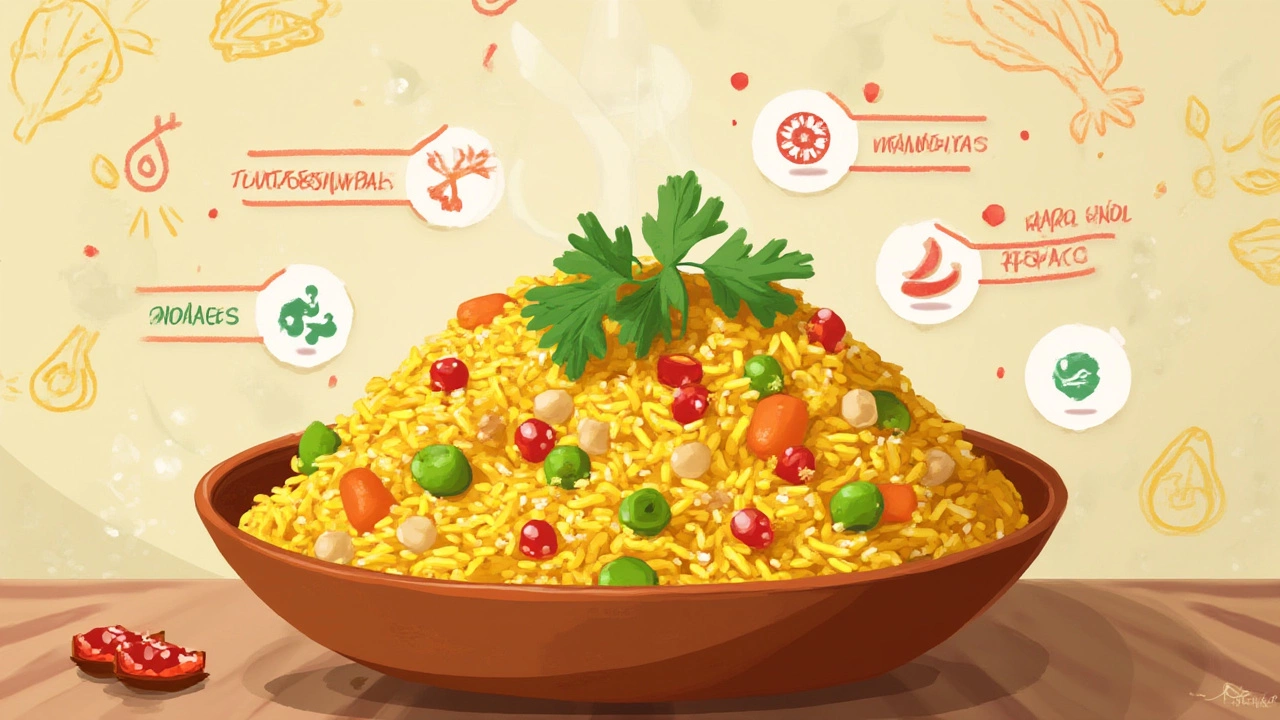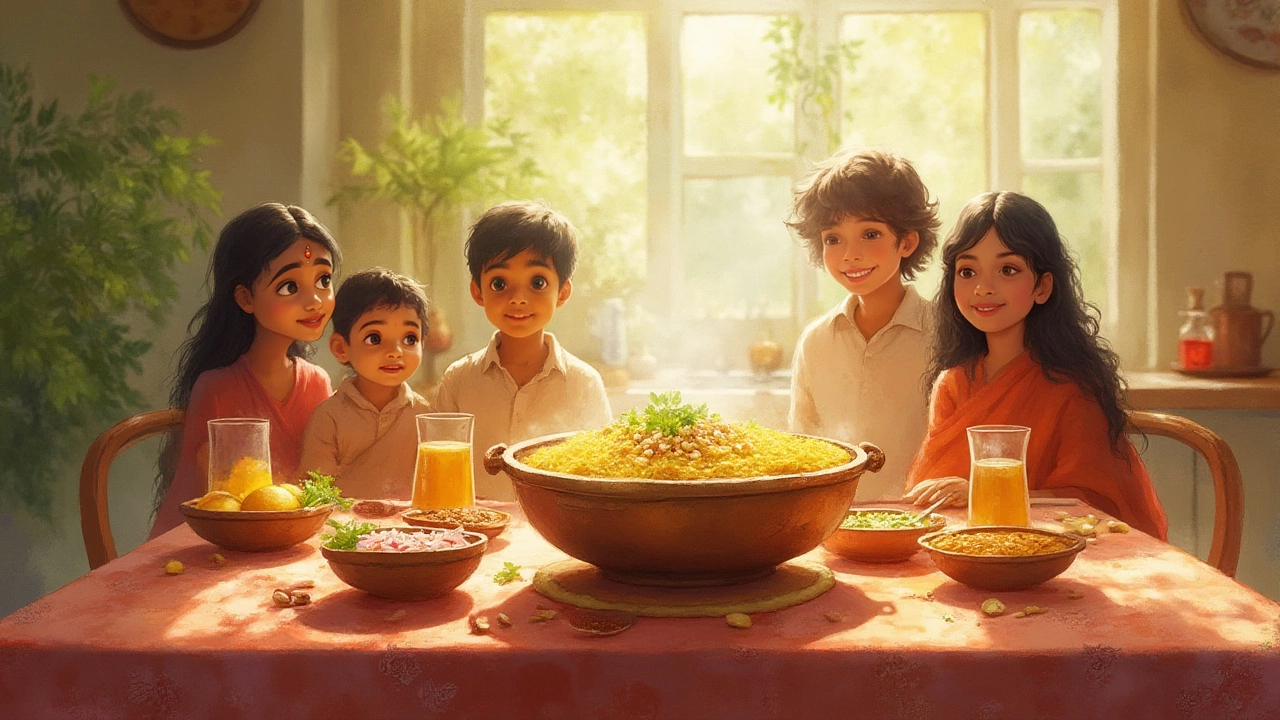Think breakfast, think comfort—and for millions, nothing beats the golden pile of poha on a breezy morning. But while poha (flattened rice) dances on Indian breakfast tables and Auckland homes alike, does it actually bring something good to the table, health-wise? Turns out, poha isn’t just delicious. Its health story is full of surprises, especially if you know how (and how much) to eat it. Ready for a deep-dive? Don’t blame me if you crave a warm bowl by the end!
What Is Poha? Breaking Down Its Nutrition
Let’s get clear on what’s in the classic bowl. Poha is made from rice that’s parboiled, flattened, and dried. It cooks in minutes, which I love when Luna, my golden retriever, is giving me those "feed-me-now" eyes. But quick cooking can make skeptics wonder: does it still have any nutrition left, or is it just glorified white carbs?
Here's what a standard serving (about 100g of uncooked poha, yielding roughly two small bowls cooked):
| Nutrient | Amount per 100g (uncooked) |
|---|---|
| Calories | 350 kcal |
| Carbohydrates | 77 g |
| Protein | 7 g |
| Fat | 1 g |
| Fiber | 1.5 g |
| Iron | 2.5 mg |
| Sodium | 10 mg (without added salt) |
| Calcium | 13 mg |
| Magnesium | 32 mg |
| Folate | 32 mcg |
So, is poha just simple carbs? Not really. White rice tends to get most of its fiber and minerals stripped out, but poha keeps more of them—at least compared to pure white rice. Look at the fiber and iron: both are higher than you’d think for something this light. In India, poha is often fortified with extra iron, mainly because the classic version uses iron pans for parboiling. Handy for people who need bump in iron (like women, vegetarians, or teens).
What poha doesn’t have in big numbers: protein (most Indian breakfasts are like this), or much fat. That might sound like a downside, but it means it’s super flexible: you can pile on peanuts, peas, eggs, sprouts, or even paneer to make it heartier. On its own, though, poha health benefits start with its digestibility. Unlike heavy wheat or oily parathas, it’s gentle on the gut, easy to eat first thing, and doesn’t leave you sleepy. My go-to on busy mornings, especially after a late-night Netflix binge.
Is Poha a Good Choice for Weight Loss or Diabetes?
"Is poha healthy for weight loss?" Let’s get real. It’s not a magic bullet, but it’s certainly a smart swap for fried Indian breakfast options. A cup of cooked poha comes in at around 180-220 calories—not bad, right? Plus, it’s naturally low in fat and holds off hunger better than white bread or sugar-loaded cereals.
The trick is the glycemic index (GI), which measures how fast foods spike your blood sugar. Plain poha sits in the medium range—lower than plain rice, but not as low as oats. If you jazz your poha up with veggies (think capsicum, carrots, peas), a handful of roasted peanuts, and a squeeze of lemon, the fiber and protein will slow things down and help keep you full longer. If you’re pre-diabetic or diabetic, the key is your toppings and portion: keep your serving moderate, use lots of vegetables, and avoid white potatoes if you want to play it extra safe.
Something I stumble on a lot in Auckland is over-portioning. Watching movies with Luna curled up on my lap? Suddenly, the whole pot is gone. But resisting a second bowl is probably the best thing for weight loss. Here’s a bonus tip: always measure your uncooked poha before cooking—a quarter cup (about 25g) per person makes a surprisingly satisfying meal once puffed up.
For anyone watching cholesterol, poha is naturally cholesterol-free. The only place things go off the rails is when extra oil, fried potatoes, or processed sev (those crunchy toppings) join the party. If you stick to roasted or minimal oil, poha easily competes with trendy "healthy" breakfasts from avocado toast to egg muffins—with a fraction of the cost and effort.

Benefits of Eating Poha: More Than Carbs
Let’s bust the myth: "Indian breakfasts make you sluggish and sleepy." That’s not really true if you eat poha. Because it’s so easy to digest, you don’t end up with that post-brunch crash. I love it after a morning dog-walk, when I need real energy but can’t deal with a heavy meal. And if you leave the bowl out, even pets like Luna try their luck at a lick!
Poha is gluten-free, perfect for coeliac disease or sensitive stomachs. It isn’t a common allergen, and being light on the tummy, it’s ideal if you have a sick day or just want something simple. For kids and the elderly, it’s a gentle, satisfying option—especially with a few cooked veggies mixed in for color and vitamins. Folate present in poha is great for pregnant women. And though the protein is nothing to brag about, leaders in Indian home-cooking solve this by adding scrambled paneer (if you’re a veggie) or a poached egg if you eat meat.
One fun fact: Lemon added to poha not only adds zing, it helps your body absorb all that iron better. So if you’re feeding a family prone to anemia (super common in India and also among vegetarians in NZ), remember the squeeze at the end. A 2019 study from the Indian Journal of Nutrition tested different breakfast grains for keeping people full. Poha, dressed with nuts and a variety of veg, scored better for satiety than plain toast, and nearly matched oatmeal—impressive for such a simple staple.
Want stronger bones? Pair your poha with a side of yogurt. Want a full, rainbow bowl? Grate in a beetroot or toss in leftover cooked beans. The classic Maharashtrian kanda poha (onion poha) adds both antioxidants from onions and extra flavor. Change one tiny thing, and poha adapts—never gets boring!
How to Make Poha Even Healthier: Smart Cooking Tips
It’s easy to amp up the "healther-than-cereal" side of poha. If your grandma, mum, or YouTube chef loads up on oil, you don’t need to. Saute onions and green chili in just a tablespoon of oil (or use a nonstick pan and go even lower). Want crunch? Don’t deep-fry peanuts—just dry-roast, or better yet, air-fry them. Want fiber? Add chopped carrots, spinach, greens, peas, even shredded cabbage. The more color, the more nutrients (and the prettier it looks for your Insta story).
- Start with a reliable brand of thick poha for best texture. The thin kind can turn mushy and is less satisfying.
- Rinse poha quickly in a big strainer—don’t soak! Soaking turns it gluey. Give it just two quick rinses and let it drain while you prep everything else.
- Boost the protein: Use nuts, seeds, or plant-based options like tofu, paneer, or even tempeh for a twist.
- Go light on potatoes: Use sweet potato for more fiber and nutrients if you can’t skip it.
- Freshen up with cilantro, lemon, and pomegranate seeds at the end. Zingy flavors = more fun, less salt needed.
- Avoid instant-mix packets—they’re loaded with sodium and artificial flavors. Nothing beats simple, real ingredients.
- Looking for extra fiber? Add some oat bran or a sprinkle of psyllium while cooking. You won’t notice it, but your digestion will thank you.
- Cooking for kids or picky eaters? Grate in cheese or sneak in tiny diced veggies they won’t spot—works every time.
- Have leftovers? Next day, poha goes great in lettuce wraps for a "desi taco" lunch, or toss it in a cup of soup for quick comfort.
So, the next time you ask "is poha healthy?"—remember it’s so much more than a simple carb. It’s light, flexible, friendly to almost every diet, and a sneaky way to sneak in more nutrition without forcing yourself to eat salad at 7am. With a bit of creativity, it can be as wholesome as any trendy café breakfast, with flavors that actually make you want to wake up. Plus, Luna approves—even if she has to stick to her dog food.
